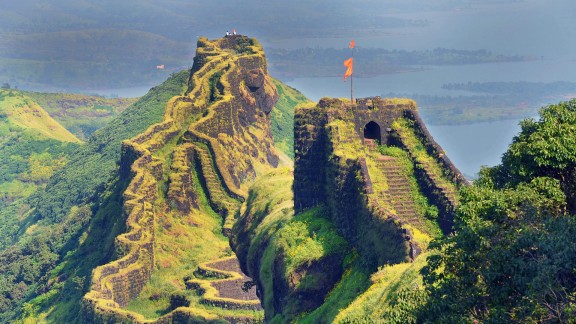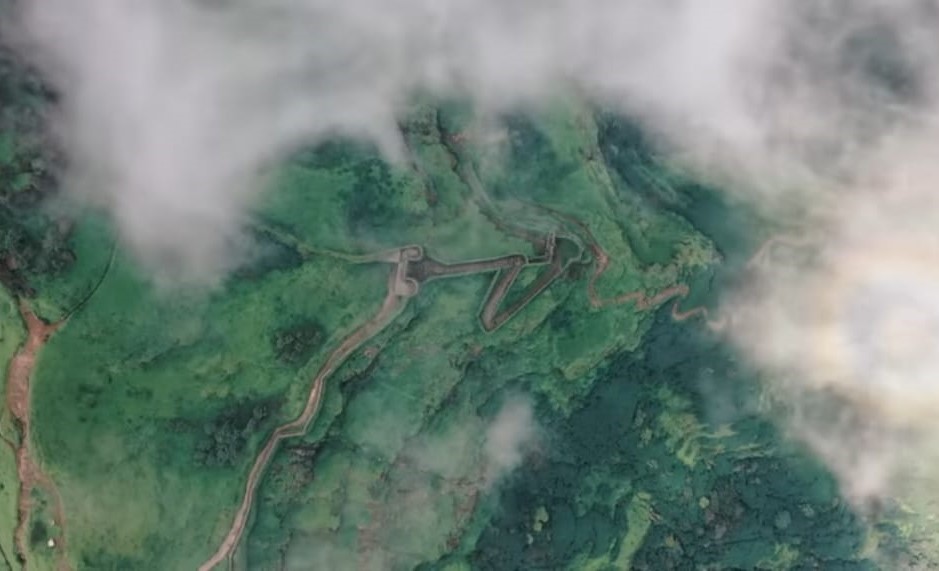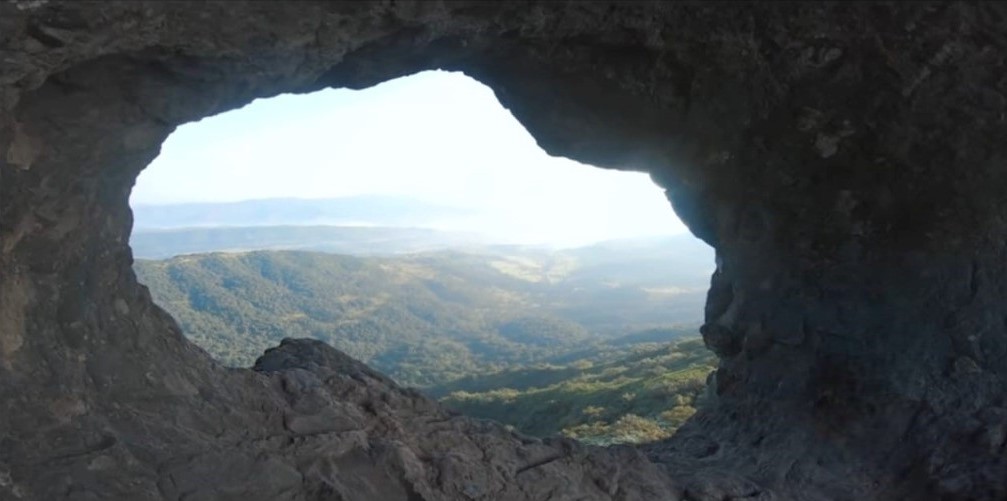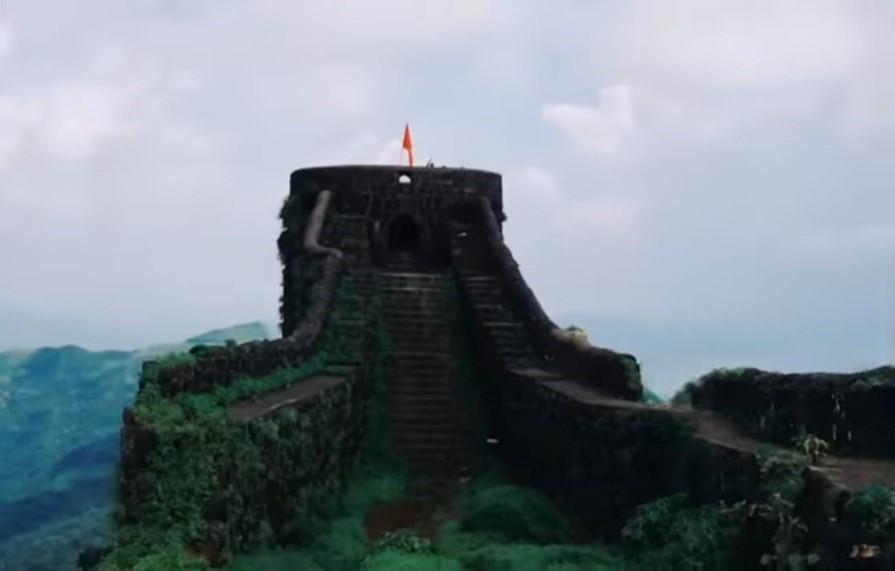Embark on an unforgettable journey to Rajgad Fort: An Epic Adventure into the Past. Discover the historical marvels, breathtaking landscapes, and rich cultural heritage that this majestic fort holds. Join us as we delve deep into the captivating history and explore the fascinating stories that make Rajgad Fort an exceptional destination for adventure seekers and history enthusiasts alike.
Introduction
Welcome to the incredible realm of Rajgad Fort, a true gem of Maharashtra, India. Situated atop the Sahyadri mountain range, this ancient fort carries with it a tapestry of tales that date back centuries. As you step into the world of Rajgad, you’ll be transported to an era of valor, royalty, and architectural brilliance. The fort’s colossal walls, strategic location, and panoramic views are just a glimpse of the adventures that await you.

History of Rajgad: A Journey Through Time
Rajgad Fort, a majestic citadel perched atop the Sahyadri mountains in Maharashtra, India, has witnessed the ebb and flow of history over the centuries. From its pre-Shivaji origins to the present day, the fort stands as a testament to the valor and legacy of the Maratha Empire. Let’s embark on a captivating journey through time, exploring the rich history of Rajgad at different periods.
Pre-Shivaji Maharaj Period
The history of Rajgad Fort dates back to ancient times when it was known as “Murumbdev.” The fort was initially under the control of the Yadava dynasty, followed by the Bahmani Sultanate in the 14th century. Its strategic location made it an important outpost, guarding the trade routes in the Deccan region.
During Shivaji Maharaj’s Reign
The fort underwent significant modifications under Shivaji’s guidance. He strengthened the fortifications, built watchtowers, granaries, and water reservoirs, and implemented strategic military architecture to safeguard against enemy attacks. Rajgad played a pivotal role in several crucial battles and campaigns led by Shivaji.
Shivaji Maharaj Captures Rajgad Fort
It was during the reign of Chhatrapati Shivaji Maharaj that Rajgad Fort rose to prominence. In 1648, Shivaji captured the fort from the Adil Shahi Sultanate and renamed it “Rajgad,” meaning the “King’s Fort.” Rajgad became the capital of the Maratha Empire and served as the seat of power for Shivaji’s rule.
Mirza Raja Jaysingh: A Prominent Mughal Military Commander
During the 17th century, Mirza Raja Jaysingh served as a distinguished military commander and noble in the court of Mughal Emperor Aurangzeb. His role in the history of Rajgad Fort left a significant impact on the power dynamics of the region.
Rajgad Fort: The Maratha Empire’s Strategic Capital
Rajgad Fort, situated on the Sahyadri mountain range, served as the capital of the Maratha Empire during the reign of Chhatrapati Shivaji Maharaj. This formidable stronghold played a pivotal role in the empire’s defense and strategic planning against various adversaries, including the Mughal Empire.
The Mughal Siege of Rajgad Fort
In 1670, as part of Aurangzeb’s campaign to suppress Maratha power and establish Mughal dominance, the Mughal forces, led by Mirza Raje Jaisingh, initiated a siege of Rajgad Fort. This marked a critical confrontation between the two powerful empires and set the stage for a prolonged and intense battle.
Maratha Resilience and Valor
Under the leadership of Shivaji Maharaj, the Maratha warriors displayed remarkable courage and resilience, thwarting the Mughal advances during the siege. Despite the challenging circumstances, the Marathas fiercely defended their fort and demonstrated their military prowess.
The Siege Lifted: Factors and Outcomes
The siege of Rajgad Fort persisted for several weeks until various factors, including the onset of monsoon rains, forced the Mughal forces, including Mirza Raja Jaysingh, to retreat. The withdrawal marked a significant setback for the Mughal Empire, as they failed to capture the formidable fort.
Rajgad’s Impact on Maratha Determination
The victory at Rajgad bolstered the Marathas’ determination to safeguard their kingdom and further strengthened their resolve to resist external forces. The triumph at Rajgad became an inspiration for subsequent battles and triumphs of the Maratha Empire.
A Notable Historical Event
The siege of Rajgad Fort by Mirza Raja Jaysingh remains a notable event in the history of both the Maratha and Mughal Empires. It symbolizes the fierce competition for supremacy in the Deccan region during the 17th century and exemplifies Rajgad as an enduring symbol of Maratha valor and resistance.
After Shivaji Maharaj’s Era
After Chhatrapati Shivaji Maharaj’s demise, the fort remained under Maratha control. It was a witness to the power struggles within the Maratha Empire, with control passing from one ruler to another. The fort continued to be a bastion of Maratha strength and was involved in various military confrontations during this period.
Rajgad Fort in the Present
Today, Rajgad Fort stands as a symbol of Maharashtra’s rich history and cultural heritage. The ruins of the once-mighty structures offer a glimpse into the architectural brilliance of the past. The fort’s serene surroundings and breathtaking views attract history enthusiasts, trekkers, and nature lovers alike.
The Archaeological Survey of India (ASI) and the Maharashtra Government have taken initiatives to preserve and maintain the fort’s historical significance. Efforts have been made to conserve the heritage structures and make the fort accessible to visitors.
The Architecture and Layout of Rajgad Fort
Rajgad Fort stands as an awe-inspiring testament to ancient engineering and architectural brilliance. With its strategic location atop the Sahyadri mountain range, it boasts a layout that combines defensive strength with aesthetic beauty.

Darwaja- (Gates)
Rajgad Fort is accessible through four primary gates, each designed strategically to enhance the fort’s defensive capabilities. These gates are:
- Mahadarwaja: Mahadarwaja, also known as the “Main Gate,” is the primary entrance to Rajgad Fort. It is located on the eastern side of the fort and is the most significant and well-known entrance. Historically, this gate served as the main access point for the fort, and it played a vital role in defending the fort against invaders. The gate is designed with sturdy fortifications and massive stone walls, showcasing the engineering skills of that era.
- Pali Darwaja: Pali Darwaja is another entrance to Rajgad Fort, situated on the eastern side. Unlike Mahadarwaja, Pali Darwaja is not as prominently used and is considered a secondary or less significant gate. It is believed that Pali Darwaja was primarily used as a secret entrance during emergencies or as an escape route during sieges. Its strategic location allowed for covert movements and enhanced the fort’s defensive capabilities.
- Gunjawane Darwaja: Gunjawane Darwaja is positioned on the western side of Rajgad Fort. Like Pali Darwaja, it is also considered a secondary gate and not as heavily fortified as Mahadarwaja. Gunjawane Darwaja provided access to the fort from the Gunjawane village and was an alternate route for movement in and out of the fort.
- Alu Darwaja: Alu Darwaja is one of the primary gates of Rajgad Fort, located on the southern end. This gate, like Mahadarwaja, holds significant importance in the defense and strategic layout of the fort.

Machi – (Watch towers)
Rajgad Fort is equipped with a series of bastions and watchtowers strategically distributed along its perimeter. These bastions provided a vantage point for soldiers to keep a watch on the surroundings and detect any approaching threats. Some notable bastions include:
- Suvela Machi: Suvela Machi is a prominent bastion located on the eastern side of Rajgad Fort. It is one of the most strategically significant sections of the fort due to its natural fortifications. Suvela Machi is characterized by steep cliffs on three sides, making it almost impregnable and challenging for invaders to breach. There is a hill called “Duba” at the beginning of the machi. A modest temple dedicated to Lord Hanuman can be seen as we move forward. From this temple, a straight path leads to the second tier, where the fortification begins. A huge hole in the rock face can be found. This was sculpted by the wind and measures around 3 meters in diameter. The name of this hole is “Nedha”. To get a nice look, you can climb inside this hole. But as you walk away from the Nedha, you can see an Elephant head like structure, called as “Hatti prastar,” meaning Elephant carved in rock. This hatti prastar bears nedhi on the upper side.


- Padmavati Machi: Padmavati Machi is another essential bastion within Rajgad Fort, situated on the southeastern side. It offered a breathtaking panoramic view of the surrounding landscape, allowing the fort’s occupants to monitor any movements in the region. It served as a crucial observation point and defense position during times of conflict. There is a temple situated on this machi known as Padmavati temple. There is also a lake known as Padmavati Lake. The lake was constructed during the time of Chhatrapati Shivaji Maharaj’s rule. It was part of a well-thought-out water management system designed to ensure a reliable water supply to sustain the fort’s residents during both normal times and times of sieges. The lake’s strategic location allowed it to collect and conserve rainwater, ensuring a constant supply of water for the fort’s occupants, even during dry seasons or prolonged sieges.
- Sanjeevani Machi: On the southwest side of Rajgad Fort, Sanjeevani Machi is a notable area. It is a beautiful example of a citadel with two forms of defense. As the enemy must destroy both layers to penetrate the fort and frequently suffers severe losses in such mishaps, these bastions add an extra layer of security to the fort. What you can see here is also how the hill’s inherent characteristics are used to create a powerful type of defense.
Chilkhati Buruj
As we move in Suveli machi, we come across a structure called as Chilkhati Buruj. The shield is referred to as a Chilkhat, and bastion as a Buruj. Here, Chilkhati Buruj refers to bastions capable of withstanding cannon fire. So, as the name says it all, Chilkhati Buruj was one of the greatest safe guard measure during seizes.

Samadhi of Saibai on Rajgad Fort:
Saibai was first wife of Chhatrapati Shivaji Maharaj. She played a significant role in his early years. She was known for her support, wisdom, and devotion to Shivaji Maharaj and his vision of establishing a Maratha state. Tragically, Saibai passed away at a young age in 1659, leaving behind a profound impact on Shivaji Maharaj and his family.
The Memorial: To honor and commemorate Saibai, a memorial or Samadhi was constructed on Rajgad Fort. Rajgad, being one of the important forts associated with Chhatrapati Shivaji Maharaj, held great significance during his reign. It was chosen as the site for the Samadhi of Saibai, serving as a place for remembrance and reverence.

Conclusion
Rajgad Fort stands tall as an embodiment of valor, history, and enigmatic tales that have withstood the test of time. As we traverse its ancient pathways, we are transported to a bygone era, where the echoes of heroism and sacrifice resound through the ramparts.
Today, Rajgad Fort beckons both history enthusiasts and adventure seekers to immerse themselves in its grandeur. It stands not only as a cherished heritage site but also as a source of inspiration, urging us to embrace the valor of the past and the significance of preserving our historical legacy.
As we bid farewell to Rajgad Fort, we carry with us the echoes of its legends, the whispers of its spirits, and a deeper appreciation for the glorious chapters etched within its stone walls. May its stories live on, enriching our understanding of history and fostering a sense of pride in our remarkable cultural heritage.
FAQs (Frequently Asked Questions On Rajgad Fort)
What is the historical significance of Rajgad Fort?
Rajgad Fort holds historical importance as the former capital of the Maratha Empire and played a pivotal role in the establishment of the Maratha rule in India.
Who built Rajgad Fort, and when was it constructed?
Rajgad Fort was originally built by the Yadava dynasty in the 12th century. It was later captured and fortified by Chhatrapati Shivaji Maharaj in the 17th century.
What are the architectural features that make Rajgad Fort unique?
Rajgad Fort exhibits impressive architectural marvels like Pali Darwaja, Suvela machi, chilkhati buruj including sturdy bastions, imposing gates, and well-planned water management systems.
Can you explain the strategic significance of Rajgad Fort during historical battles?
Rajgad Fort’s strategic location atop a hill provided an advantageous vantage point for monitoring the surrounding territories, making it a formidable defensive stronghold. Padmavati Lake is the best example
How was the water supply managed within Rajgad Fort during ancient times?
Rajgad Fort’s innovative water management system involved constructing reservoirs, tanks, and rainwater harvesting techniques to ensure a sustainable water supply for its residents.
How did the geography of Rajgad Fort aid its defense during historical sieges?
The rugged terrain and steep cliffs surrounding Rajgad Fort provided natural barriers that bolstered its defensive capabilities during battles.